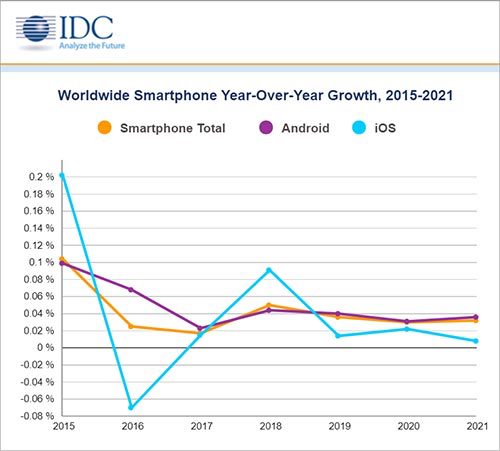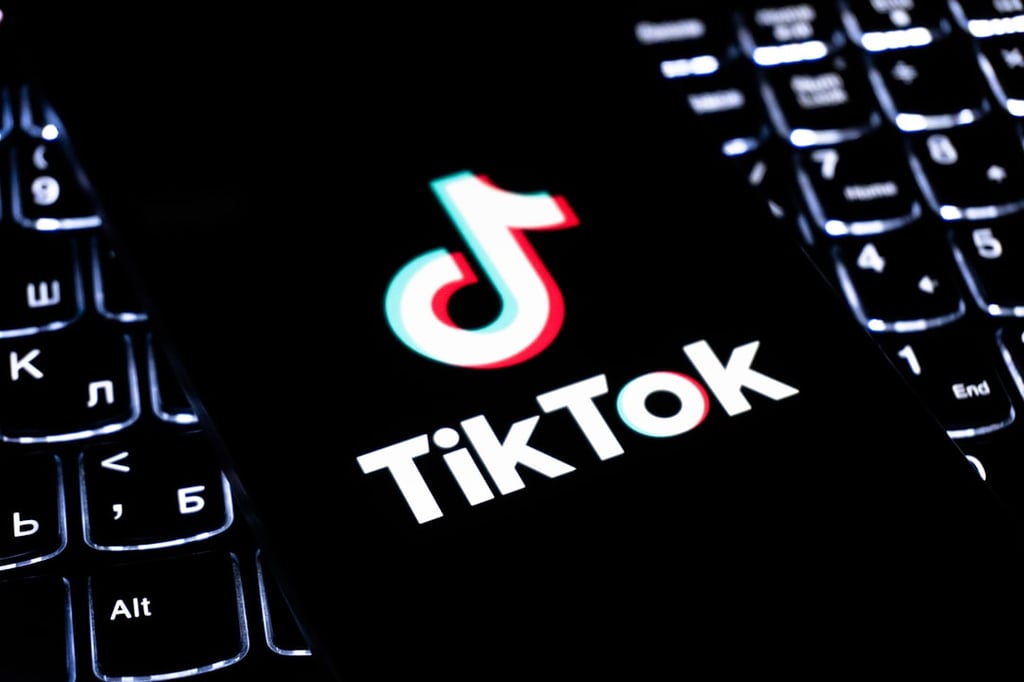The smartphone market continues to expand and will continue to do so over the next several years, thanks, in part, to the growing popularity of super-sized devices like Samsung’s new Galaxy Note8. In a forecast from IDC, the technology research firm predicted that vendors will ship over 1.7 billion smartphones in 2021, up from 1.47 […]
Datamation content and product recommendations are
editorially independent. We may make money when you click on links
to our partners.
Learn More
The smartphone market continues to expand and will continue to do so over the next several years, thanks, in part, to the growing popularity of super-sized devices like Samsung’s new Galaxy Note8.
In a forecast from IDC, the technology research firm predicted that vendors will ship over 1.7 billion smartphones in 2021, up from 1.47 billion last year. Notably, 2016 was the first time the market registered a single-digit growth rate (2.5 percent).
Although the years of heady, double-digit growth may be gone, the industry remains on an upward trajectory. IDC expects that a trickle of new smartphone users and two-year replacement cycles to nudge the market into a compound annual growth rate (CAGR) of 3.3 percent over five years.

One particular bright spot is the so-called phablet segment made up of devices that fall between compact smartphones and small tablets.
“Premium phablet offerings from a variety of vendors look to be the main driving force behind the growth of devices with screens 5.5 inches and larger, which are set to grow over 34 percent in 2017 across all operating systems,” said IDC research manager Anthony Scarsella, in a statement. And those premium, large-screen smartphones are set to fetch some higher prices.
“The average selling price of these devices is also expected to increase 9.0 percent as we await the arrival of ultra-premium devices such as the iPhone 8, Note 8, V30, Essential Phone, and the second-generation Pixel,” Scarsella said. Ahead of its mid-September release date, Samsung’s Galaxy Note8 can be preordered for a starting price of nearly $930.
“The large screen phenomenon shows no signs of slowing down as phablets will make up 40 percent of the smartphone market by the end of 2017. By 2021, phablets will control slightly over 51% of the market proving that bigger is most often better to most consumers,” concluded Scarsella.
Android has cemented itself as the leading mobile operating system. This year, it is expected to run on over 1.27 billion smartphones or 85.2 percent of all the units shipped this year. Apple iOS will be a distant second with 14.6 percent of the market, or 218.7 million units.
Those market share figures will barely budge in 2021. Android will command 85.5 percent of the market that year on shipments of nearly 1.48 billion units. Meanwhile, Apple will shed some market share, claiming 14.4 percent of the market after shipping 249.3 million iPhones.
Pedro Hernandez is a contributing editor at Datamation. Follow him on Twitter @ecoINSITE.
-
Ethics and Artificial Intelligence: Driving Greater Equality
FEATURE | By James Maguire,
December 16, 2020
-
AI vs. Machine Learning vs. Deep Learning
FEATURE | By Cynthia Harvey,
December 11, 2020
-
Huawei’s AI Update: Things Are Moving Faster Than We Think
FEATURE | By Rob Enderle,
December 04, 2020
-
Keeping Machine Learning Algorithms Honest in the ‘Ethics-First’ Era
ARTIFICIAL INTELLIGENCE | By Guest Author,
November 18, 2020
-
Key Trends in Chatbots and RPA
FEATURE | By Guest Author,
November 10, 2020
-
Top 10 AIOps Companies
FEATURE | By Samuel Greengard,
November 05, 2020
-
What is Text Analysis?
ARTIFICIAL INTELLIGENCE | By Guest Author,
November 02, 2020
-
How Intel’s Work With Autonomous Cars Could Redefine General Purpose AI
ARTIFICIAL INTELLIGENCE | By Rob Enderle,
October 29, 2020
-
Dell Technologies World: Weaving Together Human And Machine Interaction For AI And Robotics
ARTIFICIAL INTELLIGENCE | By Rob Enderle,
October 23, 2020
-
The Super Moderator, or How IBM Project Debater Could Save Social Media
FEATURE | By Rob Enderle,
October 16, 2020
-
Top 10 Chatbot Platforms
FEATURE | By Cynthia Harvey,
October 07, 2020
-
Finding a Career Path in AI
ARTIFICIAL INTELLIGENCE | By Guest Author,
October 05, 2020
-
CIOs Discuss the Promise of AI and Data Science
FEATURE | By Guest Author,
September 25, 2020
-
Microsoft Is Building An AI Product That Could Predict The Future
FEATURE | By Rob Enderle,
September 25, 2020
-
Top 10 Machine Learning Companies 2021
FEATURE | By Cynthia Harvey,
September 22, 2020
-
NVIDIA and ARM: Massively Changing The AI Landscape
ARTIFICIAL INTELLIGENCE | By Rob Enderle,
September 18, 2020
-
Continuous Intelligence: Expert Discussion [Video and Podcast]
ARTIFICIAL INTELLIGENCE | By James Maguire,
September 14, 2020
-
Artificial Intelligence: Governance and Ethics [Video]
ARTIFICIAL INTELLIGENCE | By James Maguire,
September 13, 2020
-
IBM Watson At The US Open: Showcasing The Power Of A Mature Enterprise-Class AI
FEATURE | By Rob Enderle,
September 11, 2020
-
Artificial Intelligence: Perception vs. Reality
FEATURE | By James Maguire,
September 09, 2020
SEE ALL
ARTICLES
Pedro Hernandez is a contributor to Datamation, eWEEK, and the IT Business Edge Network, the network for technology professionals. Previously, he served as a managing editor for the Internet.com network of IT-related websites and as the Green IT curator for GigaOM Pro.










